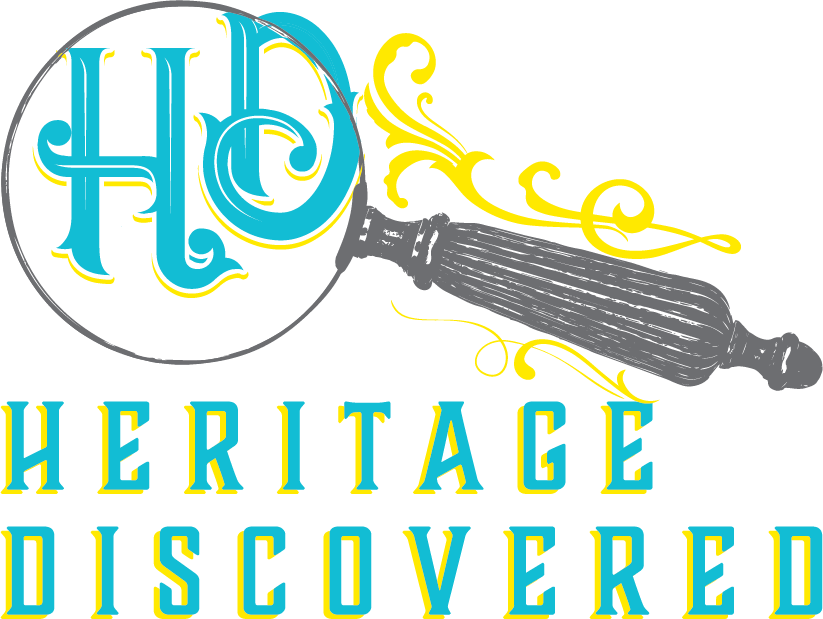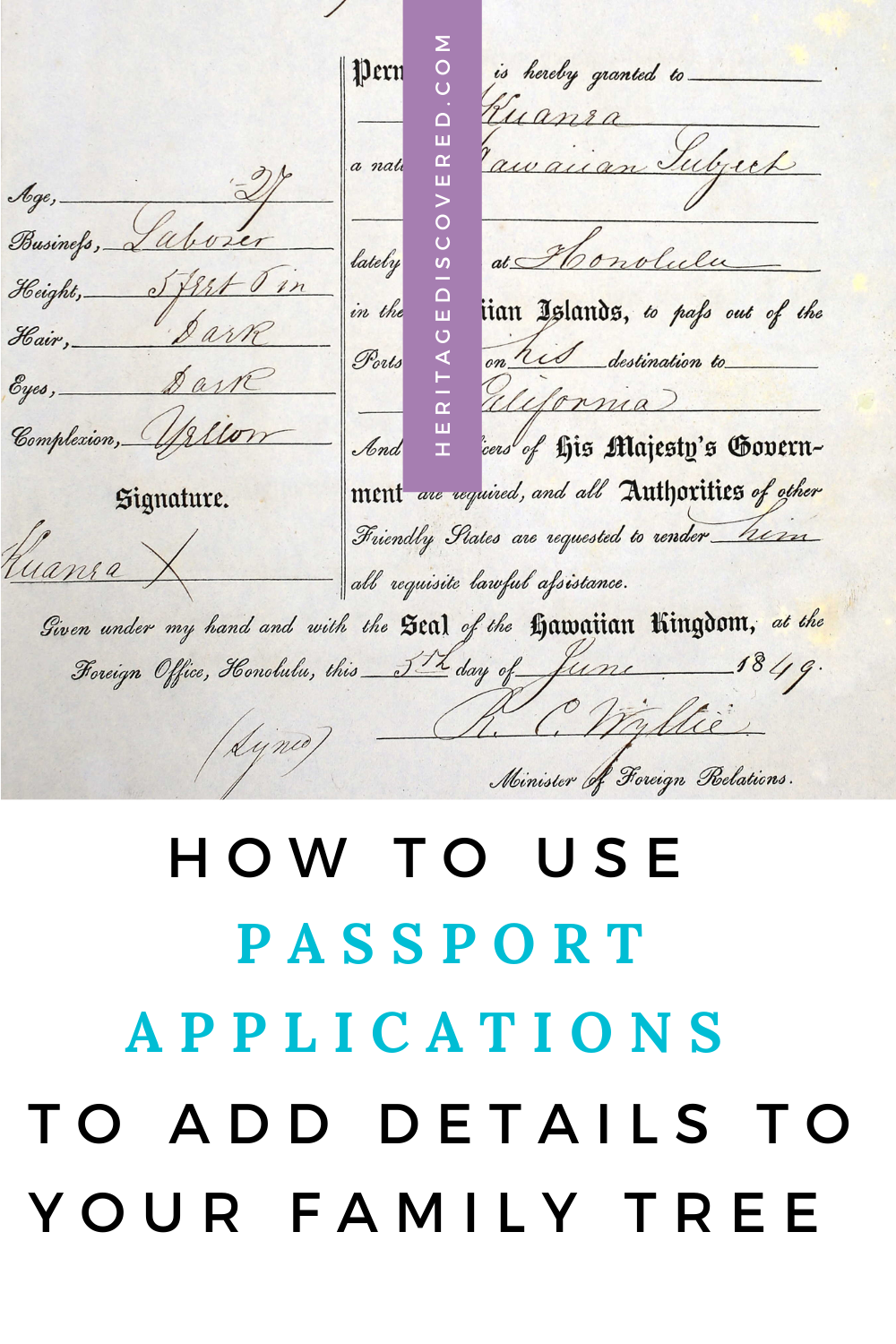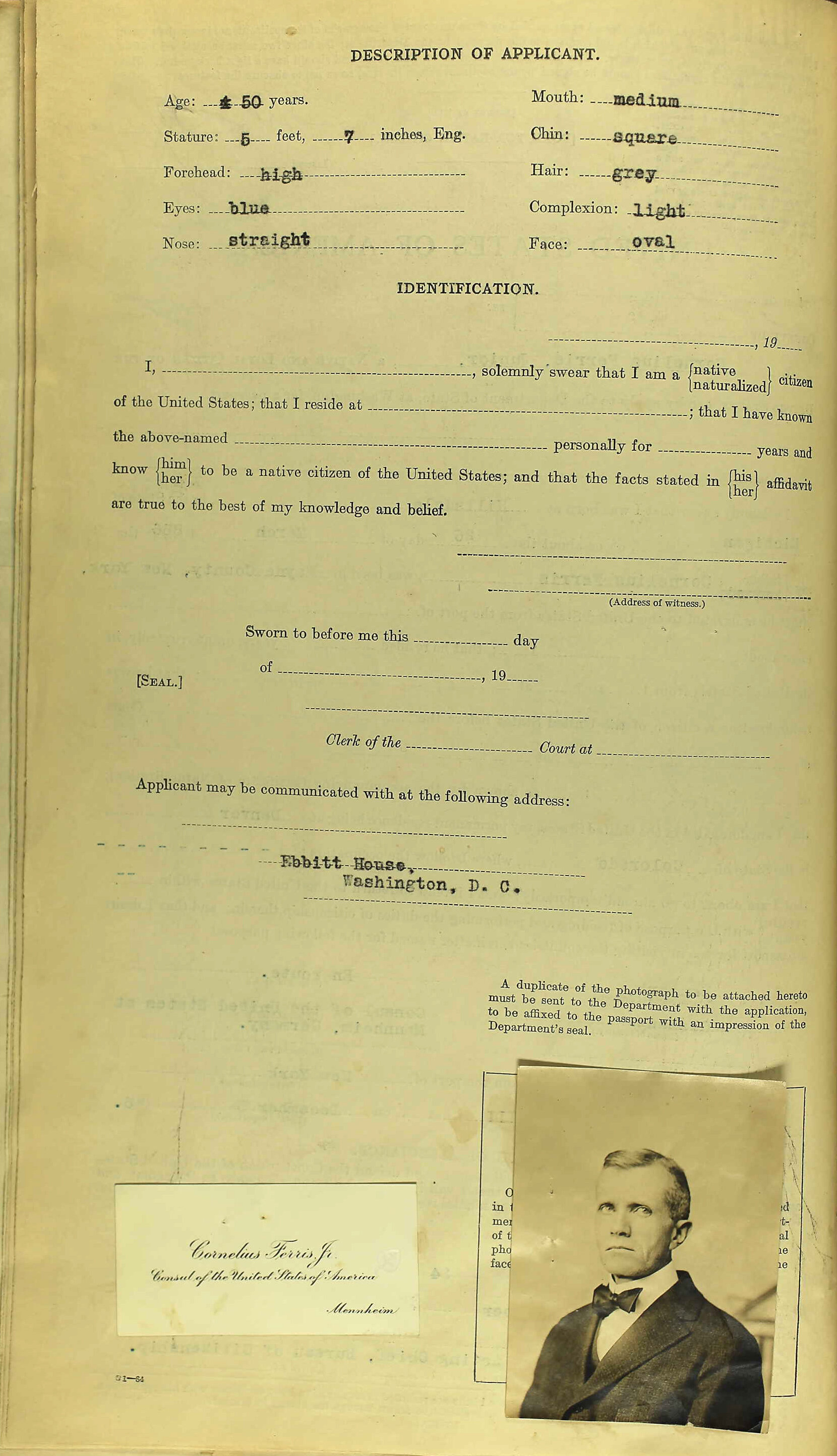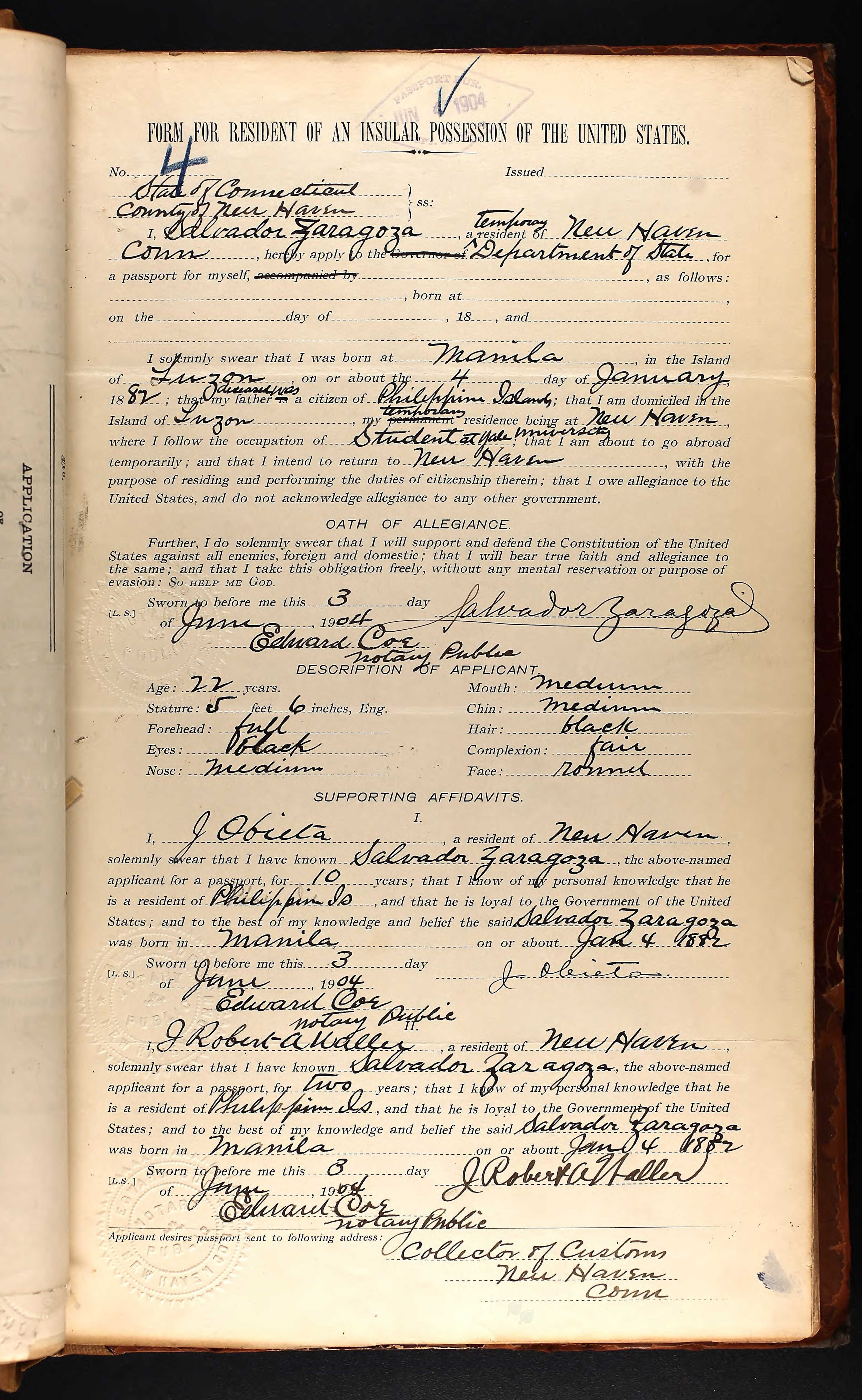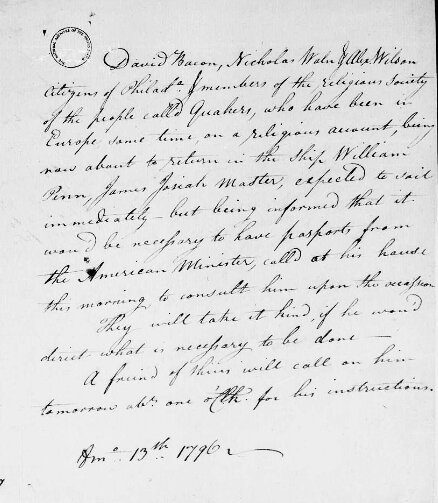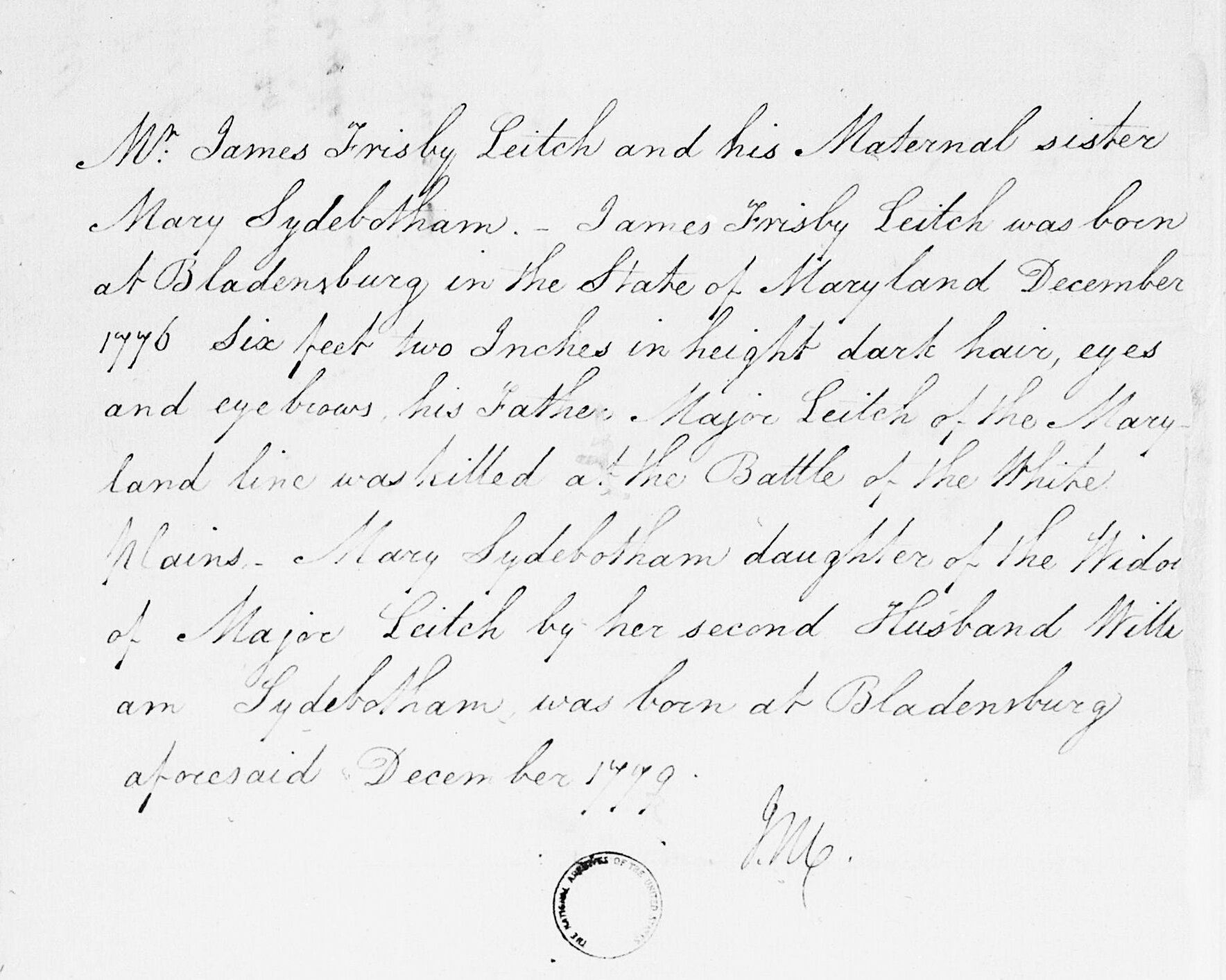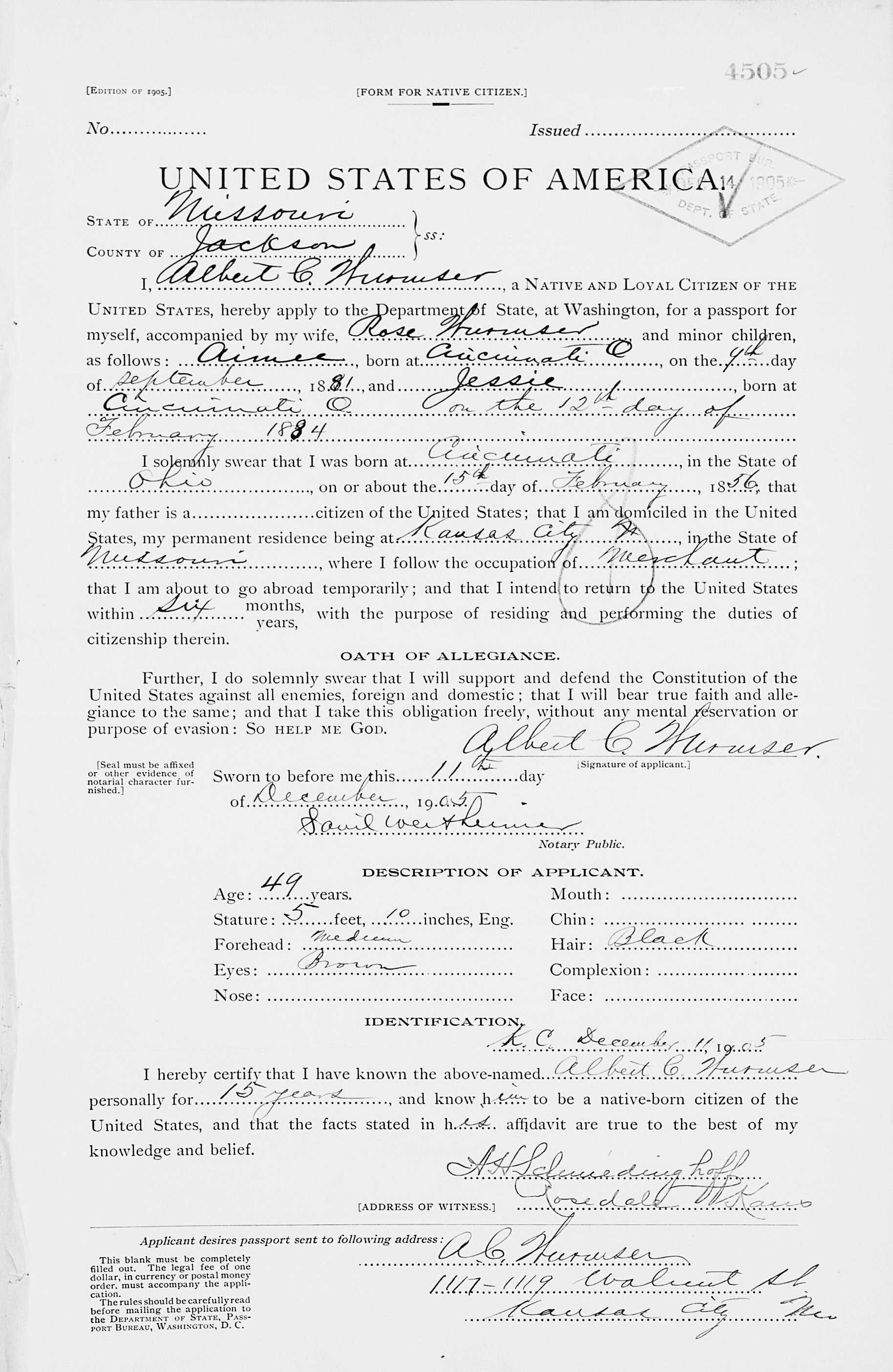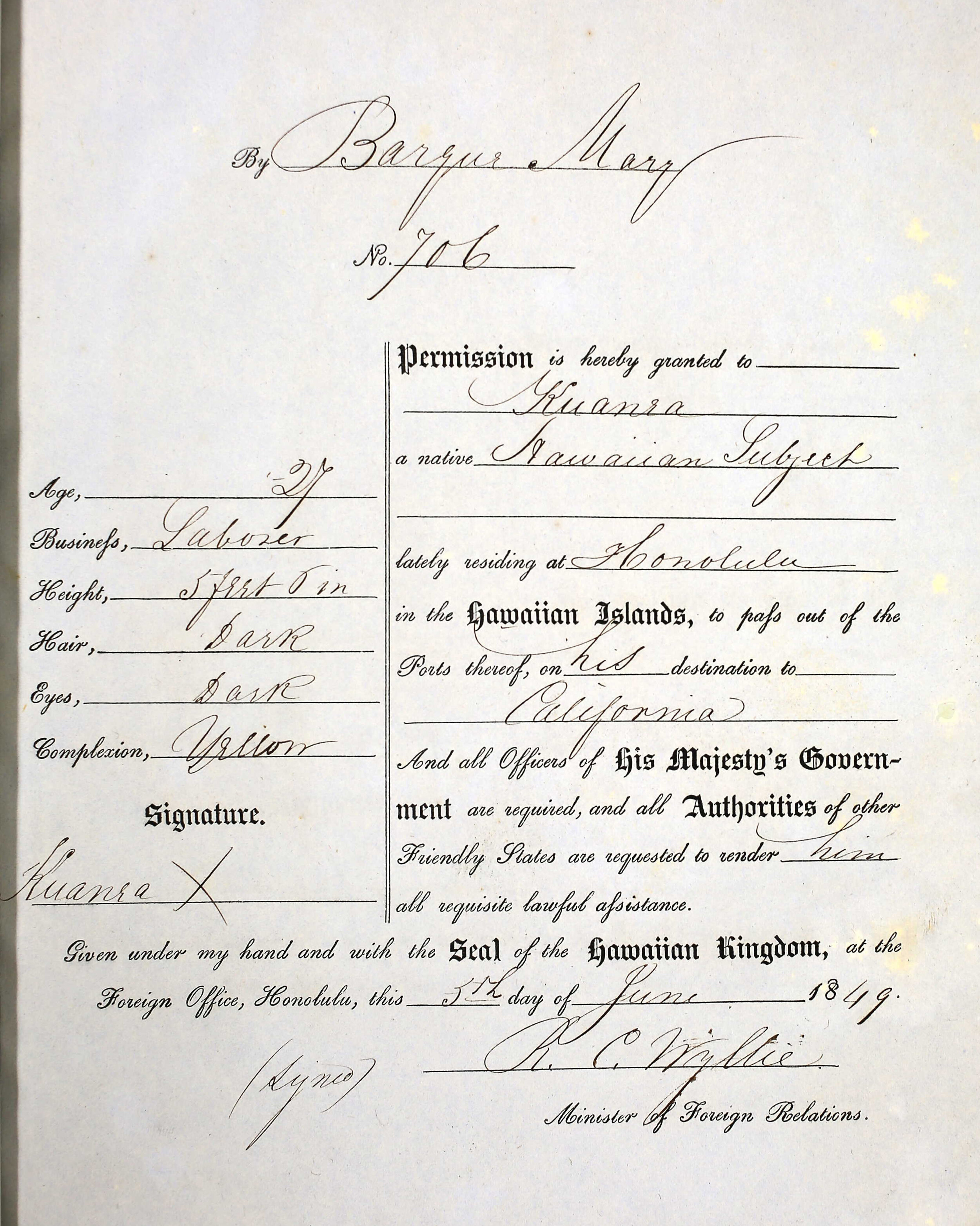How To Add More Details To Your Family Tree With Passport Applications
*This post may have affiliate links, which means I may receive commissions if you choose to purchase through links I provide (at no extra cost to you). All opinions remain my own.
In this post
The history of issuing passports in the U.S.
Types of passport applications
What genealogy information you can find on them
Passport applications can be rich in genealogical information about your family. They’re a great way to learn things like when and where your ancestors were traveling and how long they were away for.
Knowing about their trips adds new stories and more depth to your family history!
In this article, I’m sharing how to use passport applications for genealogy research.
The history of passports in the United States
The United States began giving out passports to citizens in 1789. Although the Department of State was the main agency, some state governors, notaries public, and other officials could also issue them.
In some cases, passports were also given to free African Americans to protect them from the accusation of being a runaway slave when visiting other states.
To streamline the process and prevent confusion, Congress passed an act in 1856 declaring that the Department of State was the only government body allowed to issue passports.
A lot of people actually traveled abroad in the 1800s for business, pleasure, and to visit family. This only increased into the early 1900s. The State Department gave out 130,360 passports between 1810 and 1873. That figure jumped to nearly 370,000 between 1877 and 1909. Over 1.1 million passports were given between 1912 and 1925.
Most of these applicants were men, but wives and children also sometimes joined them on their voyages. Through the late 1800s, family members traveling with an applicant were included on that person’s passport instead of getting their own.
Related posts:
4 Genealogy Resources for US-Canadian Border Crossing Records
What to Know About Alien Registration Files and Where to Find Them
11 of the Best Websites for Free Ship Passenger Lists
How To Save Hours Of Time With These 8 Translation Tools For Genealogy
Types of US passport applications
There are four types of passport applications that have been issued in the United States.
1) Regular passports. These are the standard passports that most people receive. After the 1860s, the applications for these were on preprinted forms.
Applications for regular passport include birth information and a physical description. Some also tell you the person’s occupation, naturalization status, and/or a destination and reason for the trip.
2) Emergency passports. This type was issued outside the U.S. and only to diplomats and consular officials in emergency situations. These were only given out from 1874 to 1926 and were valid for six months.
The requests share details like the reason for the trip, place of residence abroad, and how long they’d be out of the country. They also included the original arrival and naturalization information for naturalized citizens.
3) Special applications. Special passports were given out by the Department of State to diplomats and others when traveling for official business.
4) Insular possessions passports. This type was used for residents of the U.S. territories of Puerto Rico, the Philippines, and Hawaii. These generally cover 1901-1924, depending on the territory. These can have valuable details like the citizenship status and the name of a wife and how many children they had.
What you can find on US passport applications for your genealogy research
You can find many different gems for your genealogy research on passport applications. There is usually basic information like birthdate (or age), birthplace, and a physical description.
There may be other genealogical information like the names of relatives or their occupation.
And if the form you’re looking for was after December 1914, you’ll also find a photo!
Above you can see the names of several Quakers in Europe for religious work and the ship they were sailing home on.
This fabulous document, above, from 1797 names the applicant but also his sister and both of her husbands’ names. It also stated when and where he and the sister were born, his physical description, and said his father was a major killed in the Battle of White Plains.
Albert Wurmer’s request above names his wife and children and shares where his kids were born. It also says where and when he was born, his current residence, a physical description, and his occupation.
The types of genealogical treasures you can find on passport records are:
Birthdate and place
Residence at the time
Occupation
Reason for travel and how long they’d be away
Physical description
Photo (after 1914)
Naturalization information for immigrants
Spouse and children’s names and ages if traveling as a family
Foreign destination and reason
A list of previous passports issued, and countries visited
Their Signature
How passports were issued
One challenge in searching for applications is that passports weren’t required until 1941. Two exceptions to this rule were a short time during the Civil War (August 1861-March 1862) and a few years around the time of World War I (1918-1921).
Another challenge you might face is that only U.S. citizens could get a passport. But, from 1863-1866 and 1907-1920, if someone had filed a declaration of intent but weren't naturalized, they qualified. There were different forms for those born in the U.S. and naturalized citizens.
Despite there not being a rule mandating passports, many did still apply for one – over 168 million had already been issued by 1941! So, these records are well worth looking for even if you’re not sure if your ancestors went abroad.
Passports used to only be valid for up to two years, so there may be several applications for your ancestor.
To help you narrow down when your ancestors arrived and when they may have been naturalized so that you can more easily find passport applications, try using a US census immigration worksheet to pull together all the hints in one place.
Related posts:
10 Terrific Resources For Identifying Your Immigrant Ancestor’s Hometown
Why Should You Use Ethnic Newspapers For Genealogy Research?
What Are Naturalization Records And How Can They Support Your Research?
Where to find passport records for family history research
Ancestry and FamilySearch have passport applications from 1795-1925.
For state-specific applications, Ancestry has Hawaii records from 1849-1900 and FamilySearch has Hawaii applications from 1874-1898.
Ancestry also has a collection of Connecticut, U.S., Passport and Birth Certificates, 1852-1928, currently the only other state-specific collection. There’s also U.S. Consular Posts, Emergency Passport Applications, 1915-1926, an index to Jewish names in the Emergency Passports applications.
Ancestry and FamilySearch also have passport records for other countries.
Fold3 has records of regular applications from 1795-1905.
And don’t forget about volunteer-driven sites. You can find transcribed applications on sites like South Carolina Genealogy Trails.
The microfilmed records for all the various types of applications through 1925 are at the National Archives.
Passport records after 1925 are still with the State Department.
If this post was helpful, please consider “buying me a coffee”. Tips through Ko-Fi help me create more content like this for you! Thank you for supporting my small business!
Final thoughts
Passport records can have some fabulous details to help you in your family history research! Since people traveled internationally a lot more than we may realize in the 19th century, it can’t hurt to give it a try and see if your ancestor ever applied for a passport. Many applications are now also online.
A US census immigration worksheet can help you pinpoint when your ancestor arrived and was naturalized so you can find their passport applications faster.
